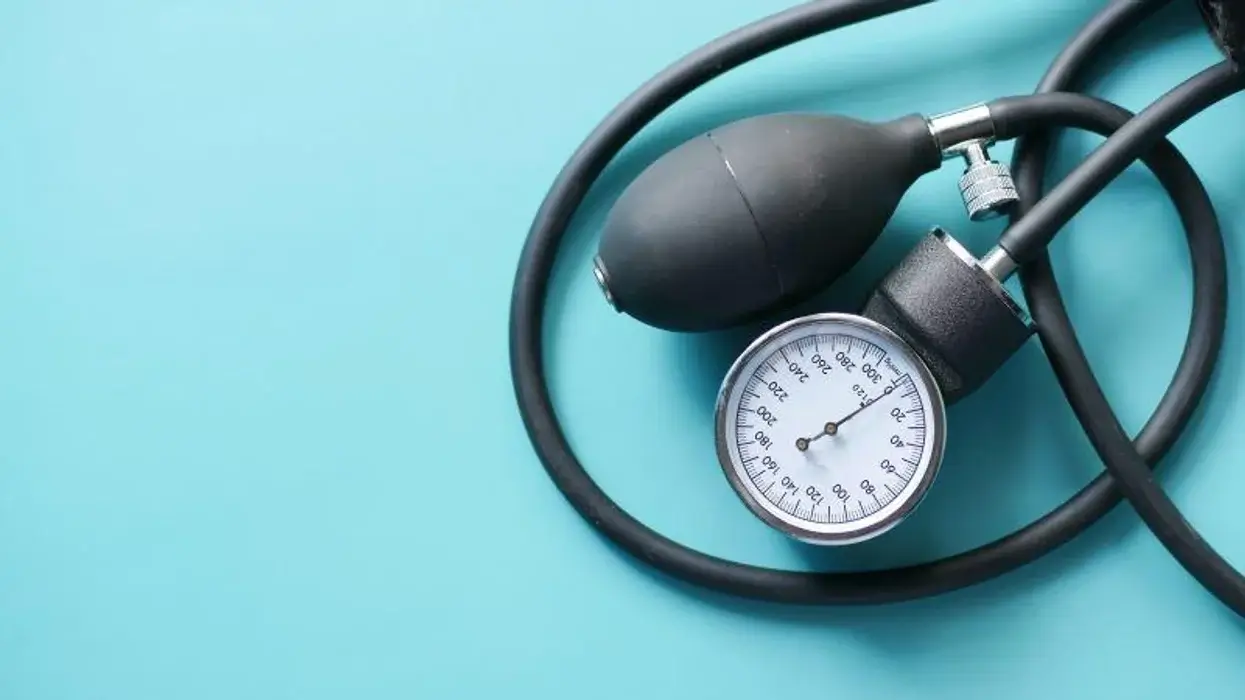Age and Gender-Specific High Blood Pressure Chart
High blood pressure chart by age and gender, normal ranges by age, measurement techniques, and risk factors for high blood pressure. Learn how to interpret your blood pressure readings and take control of your cardiovascular health.
Introduction
High blood pressure, also known as hypertension, is a common health condition that affects millions of people worldwide. Monitoring and understanding blood pressure readings is essential for maintaining good cardiovascular health. In this article, we will provide a comprehensive overview of blood pressure, its significance, and how it varies by age and gender. We will also discuss the process of measuring blood pressure, risk factors for hypertension, and when to seek medical attention. Let’s dive in!
1. What Is Blood Pressure?
Blood pressure refers to the force exerted by circulating blood against the walls of the arteries. It is measured in millimeters of mercury (mmHg) and is typically recorded as two numbers: systolic pressure over diastolic pressure. The systolic pressure represents the force when the heart contracts, while the diastolic pressure represents the force when the heart relaxes between beats.
2. What Do Blood Pressure Numbers Mean?
Blood pressure numbers are expressed as a fraction, with the systolic pressure (top number) over the diastolic pressure (bottom number). For instance, a blood pressure reading of 120/80 mmHg is considered normal for most adults.
The systolic pressure indicates how much pressure your blood exerts against arterial walls when the heart contracts, while the diastolic pressure reflects the pressure in the arteries when the heart is at rest between beats. Blood pressure readings are interpreted as follows:
- Normal: Systolic pressure below 120 mmHg and diastolic pressure below 80 mmHg.
- Elevated: Systolic pressure between 120-129 mmHg and diastolic pressure below 80 mmHg.
- Hypertension Stage 1: Systolic pressure between 130-139 mmHg or diastolic pressure between 80-89 mmHg.
- Hypertension Stage 2: Systolic pressure of 140 mmHg or higher or diastolic pressure of 90 mmHg or higher.
- Hypertensive Crisis: Systolic pressure over 180 mmHg and/or diastolic pressure over 120 mmHg. Immediate medical attention is required.
3. Normal Blood Pressure for Adults
Maintaining normal blood pressure is crucial for overall health and well-being. The American Heart Association (AHA) defines the following blood pressure categories for adults:
- Normal: Systolic pressure below 120 mmHg and diastolic pressure below 80 mmHg.
- Elevated: Systolic pressure between 120-129 mmHg and diastolic pressure below 80 mmHg.
- Hypertension Stage 1: Systolic pressure between 130-139 mmHg or diastolic pressure between 80-89 mmHg.
- Hypertension Stage 2: Systolic pressure of 140 mmHg or higher or diastolic pressure of 90 mmHg or higher.
- Hypertensive Crisis: Systolic pressure over 180 mmHg and/or diastolic pressure over 120 mmHg. Immediate medical attention is required.
4. Normal Blood Pressure for Children
Blood pressure readings in children can vary depending on their age, height, and gender. Here is a general guideline for normal blood pressure ranges in children:
| Age Group | Systolic Pressure (mmHg) | Diastolic Pressure (mmHg) |
|---|---|---|
| Newborn | 60-90 | 20-60 |
| 1-12 months | 65-100 | 45-65 |
| 1-3 years | 90-105 | 55-70 |
| 3-6 years | 95-110 | 60-75 |
| 6-9 years | 100-115 | 60-80 |
| 9-12 years | 105-120 | 65-85 |
| 12-15 years | 110-125 | 70-90 |
| 15-18 years | 115-130 | 75-95 |
5. Average Blood Pressure by Age
As we age, our blood pressure tends to increase due to various factors, including changes in artery stiffness. Here’s an overview of average blood pressure by age:
| Age Group | Systolic Pressure (mmHg) | Diastolic Pressure (mmHg) |
|---|---|---|
| 20-24 years | 120-124 | 79-81 |
| 25-29 years | 121-125 | 80-82 |
| 30-34 years | 122-126 | 81-83 |
| 35-39 years | 123-127 | 82-84 |
| 40-44 years | 125-129 | 83-85 |
| 45-49 years | 127-130 | 84-86 |
| 50-54 years | 129-133 | 85-87 |
| 55-59 years | 131-135 | 86-88 |
| 60-64 years | 134-137 | 87-89 |
| 65 years and older | 135-139 | 88-90 |
6. Blood Pressure Stages
Blood pressure is categorized into different stages based on the readings obtained. Here are the blood pressure stages according to the AHA:
| Blood Pressure Stage | Systolic Pressure (mmHg) | Diastolic Pressure (mmHg) |
|---|---|---|
| Normal | Below 120 | Below 80 |
| Elevated | 120-129 | Below 80 |
| Hypertension Stage 1 | 130-139 | 80-89 |
| Hypertension Stage 2 | 140 or higher | 90 or higher |
| Hypertensive Crisis | Higher than 180 | Higher than 120 |
7. How Blood Pressure Is Measured
Blood pressure can be measured using a device called a sphygmomanometer. There are two types: mercury and aneroid. However, electronic devices are commonly used today for convenience. The measurement process involves wrapping an inflatable cuff around the upper arm and inflating it to temporarily stop blood flow. As the cuff is slowly deflated, a healthcare provider or individual measures the pressure at which blood starts to flow again (systolic pressure) and the pressure at which it completely flows (diastolic pressure).
8. How to Take Your Blood Pressure
It is important to monitor your blood pressure regularly, especially if you have a family history of hypertension or other risk factors. Here are the steps to take your blood pressure correctly:
Getting Started
- Sit comfortably in a chair with your back supported and feet flat on the floor.
- Rest for at least 5 minutes before taking your blood pressure.
- Avoid smoking, caffeinated beverages, and exercise for 30 minutes prior to measurement.
Proper Cuff Size
- Ensure the cuff size is appropriate for your arm circumference. Using an ill-fitting cuff can lead to inaccurate readings.
Proper Positioning
- Place the cuff on your upper arm, approximately 2.5 centimeters above the elbow.
- Position the cuff in line with your heart.
Take Multiple Readings
- Take two or three readings, separated by a brief rest period.
- Record all measurements and calculate the average.
Choosing a Blood Pressure Monitor
- Consult your healthcare provider to determine the best type of blood pressure monitor for your needs.
- Follow the instructions provided with the device for accurate measurements.
9. Risk Factors for High Blood Pressure
Several factors can increase the risk of developing high blood pressure chart by age and gender. These include:
- Family history of hypertension
- Age (risk increases with age)
- Gender (men have a higher risk until age 64, while women have a higher risk after age 65)
- Unhealthy diet (excessive salt and low potassium intake)
- Sedentary lifestyle
- Obesity or overweight
- Tobacco use
- Chronic conditions (such as diabetes, kidney disease, and sleep apnea)
- Stress
- Certain medications or substances (e.g., oral contraceptives, nonsteroidal anti-inflammatory drugs)
It’s important to address these risk factors and make lifestyle changes to prevent or manage hypertension.
10. When to Call Your Healthcare Provider
While monitoring your blood pressure at home is helpful, certain situations require immediate medical attention. Contact your healthcare provider if you experience:
- Severe headaches
- Shortness of breath
- Chest pain
- Irregular heartbeat
- Dizziness or fainting
- Vision problems
- Difficulty speaking
Summary
Maintaining healthy blood pressure is crucial for overall well-being. Understanding blood pressure readings and knowing your numbers can help you identify potential risks and take appropriate action. Remember to monitor your blood pressure regularly, make necessary lifestyle changes, and consult your healthcare provider for guidance.
FAQs
Q: Can high blood pressure be cured?
A: While hypertension cannot be cured, it can be effectively managed through lifestyle changes and medication.
Q: Can stress cause high blood pressure?
A: Chronic stress can contribute to high blood pressure, so it’s important to find healthy ways to manage stress.
Q: Are home blood pressure monitors accurate?
A: Yes, many home blood pressure monitors are accurate if used correctly and validated against standard devices.
Q: How often should I check my blood pressure?
A: It is recommended to check your blood pressure at least once a year. However, if you have risk factors or a family history of hypertension, more frequent monitoring may be necessary.
Q: Can lifestyle changes alone lower blood pressure?
A: Yes, lifestyle changes such as a healthy diet, regular exercise, weight management, and stress reduction can help lower blood pressure.






